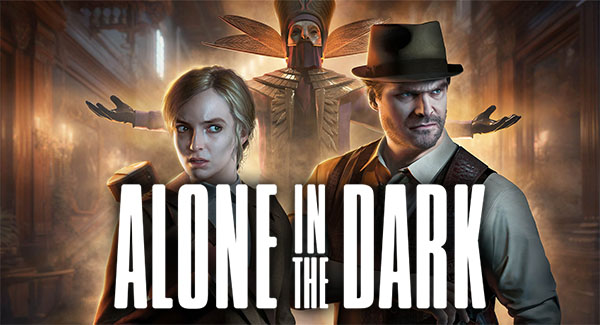
After playing the ridiculously short Prologue demo last year, I was kind of on the fence about playing Alone In The Dark -- let alone paying full retail price for it. Then I started seeing the mixed critical reviews, with some outlets giving it a 6/10, and other giving it an 85/100. I started to think that maybe I could just pass on it, and check it out later when it hits the bargain bin. Ironically, it was actually a negative review of the game that actually convinced me to buy a new copy. That review (I don't remember the review's source) said that Alone In The Dark feels old-fashioned, and that it emphasizes puzzles in favor of combat or action.
The Prologue demo (all 5 minutes of it!) did not make a good impression.
That actually made me want to play the game! Further, it encouraged me to buy a new copy, at retail, in order to support the niche genre of old-fashioned, slow-paced, puzzle-oriented survival horror, and to show that there is definitely still a market for such games. Horror games do not all have to be either over-the-shoulder shooters a la Resident Evil 2 REmake, nor P.T.-clone walking simulators that take place in residential hallways. I want to see more Eldritch survival horror games that are carried by intrigue, mystery, and genuine terror, rather than action spectacle or cliche "psychological" horror tropes. It's the same reason I bought and played Song Of Horror (which is a much better and more clever game).
The first hour or so of gameplay definitely vindicated those negative reviews. From the start, there were technical and performance problems. The framerate seemed to occasionally stutter, textures and assets would pop in, and the controls seemed a bit floaty (though better than in the Prologue demo, at least). Also, interaction prompts would disappear if I was too close to them, which made it unclear if an empty cabinet was really just an empty cabinet, or if the game was bugging out and not letting me pick up whatever happened to be inside. Other times, a button prompt would appear, but the interaction didn't actually work. And character dialogue and animation came off as unnatural and fell firmly within the uncanny valley. This is all despite the fact that I didn't get around to starting the game until a couple days after its release, and after I had already downloaded and installed a day-1 patch that was almost as big as the actual game on the disc! Good thing I had cleared out extra hard disk space on my PS5 the night before.
The Day-1 patch is almost as big as the whole game?!
I chose Emily as the character for my first playthrough, since her story of trying to find her uncle seemed like the actual story of the game, in stark contrast to the private investigator who is only even here incidentally at Emily's request. But I wasn't sure if I was getting myself into some kind of un-labeled "Hard Mode" similar to picking Chris in the original Resident Evil. I mean, I didn't even know if she would be starting the game with a gun, or if she would even be allowed to engage in combat at all. She does, and she can.
The early combat encounters sure as hell felt like I was in some kind of hard mode. Alone In The Dark loves to ambush the player with cheap shots. Heck, the very first enemy encounter in the game (playing as Emily) is a monster that jumps out at the player from behind a blind corner. It promptly pinned me into a corner and almost killed me. I guess that's one way to establish the threat that the monsters pose. It's also a great way to make the player think that the monster encounters are going to be cheap and unfair.
I was concerned by the fact that I felt like the game was overloading me with bullets and healing items right from the start. Why would I need all of this ammunition and health right from the start? Unless it is because the monsters are going to be bullet sponges that will be dealing cheap, unavoidable damage? I was getting unpleasant Callisto Protocol flashbacks.
The game would go on to ambush me a few more times during Emily's opening chapter, as well as get plenty more cheap hits and damage in. I would also go on to pick up a couple of melee weapons, only to have them break after killing a single enemy with it. When I switched to Emily's pathetic little pistol, each enemy seemed to take exactly 1 more bullet to kill than the gun could hold, meaning I had to reload during every single gun fight -- against the first enemies in the game, on the normal difficulty level.
Frequent ambushes sap health and lead to cheap deaths.
I was already starting to fear that this game would turn into much more of a painful combat slog than the reviews made it out to be.
That fear was partially justified. The game's combat just doesn't feel good, and there's far too much of it for my tastes. I've said it many times before, but I miss the good ol' days of survival horror, when deciding whether or not to even engage with a particular enemy was a strategic choice, exploration felt more open-ended, and long-term resource-management was the biggest challenge.
This game frequently forces the player to engage in combat in close quarters. At this range, aiming a firearm isn't reliable, and I repeatedly missed point-blank shots that I felt should have been gimmies. The melee weapons aren't much better. In addition to having the durability of a wet paper straw, I had trouble judging distances, and often swung the weapon wildly, missing my attacks and leaving myself exposed.
Combat gauntlets are few and far between, however. A large chunk of the game is simply exploring the Derceto manor, which is completely devoid of danger -- aside from a few scripted sequences here and there. There are long stretches of the game in which the player gets to wander around in near total safety, unlocking doors, solving puzzles, and collecting more resources for your regular trips outside the manor and into danger.
[More]
8d4b5722-ca54-4b10-b8df-ac4326b15862|17|2.1
Tags:Alone In The Dark, Pieces Interactive, THQ, THQ Nordic, horror, survival horror, cosmic horror, Derceto, Edward Carnby, Emily Hartwood, Jeremy Hartwood
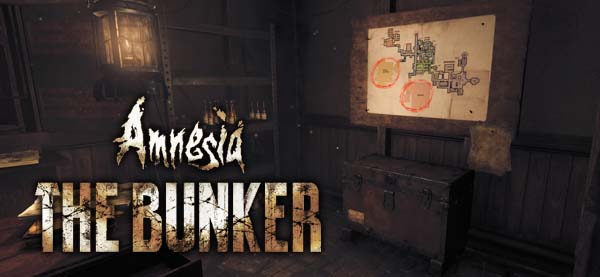
Amnesia: The Dark Descent almost single-handedly popularized the "hide and seek" and "run away" sub-genres of horror that would go on to influence everything from Outlast to >Observer_, and even the likes of P.T. and Visage (though I'm always surprised to remind myself that Silent Hill: Shattered Memories actually preceded Amnesia by a whole year). Amnesia also remained one of the more mechanically complex horror games, as more and more horror games leaned harder and harder into the paradigm of the "unarmed, defenseless player character" and erred closer and closer to walking sims. But even though Amnesia retained more mechanical complexity and more genuine threat than its contemporaries, it (and its sequels) never hit the level of complexity and action of a classic survival horror game.
Survival horror seems to be going through a renaissance of late, thanks in large part to Capcom hitting it out of the park with most of recent Resident Evil games. As such, Frictional Games wastes no time in telling the player that Amnesia: The Bunker ain't no walking sim. This is a return to old-school survival horror, but with modern conventions and twists. I have not been this impressed or excited by the opening hour of a survival horror game since booting up Resident Evil VII for the first time.
Death from German machine guns? Or death from an eldritch Beast? Take your pick.
Bullets and draw strings
Within the opening minutes of Amnesia: The Bunker, the player is dropped into a World War I trench with nothing but an empty revolver. There's no HUD at all. In order to check how many bullets you have in the revolver, you have to open the cylinder and look at how many bullets are left. To reload, you have to open the cylinder, drop out the empty shell casings, and manually reload each new bullet one at a time. Aiming and firing the gun is slow, clunky, and imprecise. There is also an ability to lean around corners and aim the gun.
After a short gun fighting tutorial in which the player is scripted to take damage, the game hands us some cloth with which to craft bandages. So the player has actual health, instead of just automatically healing over time, or losing sanity.
Then the game gives the player a flashlight. But unlike other contemporary horror games (or The Dark Descent), this flashlight doesn't run on batteries or oil. It has a simple friction motor that is recharged by repeatedly pulling a drawstring. Apparently, nothing in this game is going to be simple or effort-free. I do have to say though, that I wish the flashlight charge would last longer. Fumbling around in the dark to charge the flashlight (and risk making noise that could attract an enemy) is a wonderfully tense and anxiety-inducing mechanic, but having to do it every minute or 2 (whether there are threats present or not) gets tedious and annoying real quick. The fact that the light has to be recharged multiple times to explore a single moderately-sized room at a modestly brisk pace should have been a red flag that the light doesn't last long enough.
The flashlight and revolver require deliberate engagement from the player to use.
And then, if this weren't already feeling like a real survival horror game, within an hour of starting, you'll wander into a save room, complete with an item storage box and a map showing objectives and puzzle locations. One could easily mistake this for Resident Evil. Below the save room is a gasoline generator, which burns fuel to keep the bunker's electricity and lights running. But the supply of oil is limited, and spread throughout the bunker. And a warning sign is printed next to it, saying that the "beast" prefers to hunt in the dark. Keeping this generator running is one of the key mechanics of the game, since it (not your flashlight) is the primary source of light, and also the primary defense against the Beast.
This opening hour or 2 is so perfectly exactly what I want in a horror game! It is slow, tense, and methodical. I'm 2 hours in, and I haven't even seen the monster yet; I've only heard its threatening growls and the sound of it scuttling around within the walls and ceiling, seemingly ready to pounce at any moment. The game is already mechanically rich and varied, and full of risk / reward mechanics. Light and sound are both thematic effects and also full-fledged mechanics with strategy associated with them. It has an ever-present sense of dread and danger. The existence of the save room and item box suggests actual stakes for failure, and the presence of healing items and fuel suggest that the battle against this Beast will be one of attrition. It's looking to be a modern take on classic survival horror from one of the studios that innovated modern horror gaming.
Can I just give it an A+ already and start singing its praises on social media and YouTube? Well, let's actually play it and make sure. You know, just for shits and giggles. I mean, I haven't even seen the monster yet, so I should probably get at least that before I make up my mind, right?
The opening hours feel like pitch-perfect, classic survival horror.
[More]
1bdf3baf-4cce-48f8-bf09-155341cd0428|12|3.5
Tags:Amnesia: The Bunker, amnesia, Frictional Games, survival horror, horror, PS4, Steam, World War I, trench warfare, save room, revolver, flashlight, stopwatch, puzzle
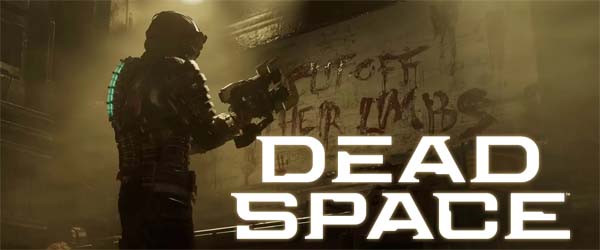
I'm gonna be perfectly honest with you right up front: I'm coming into this review with a negative bias. This is a remake that does not need to exist. Dead Space is only 10 years old, is an HD game that still looks fine. It is designed around gameplay conventions that are still standard practice today, and so the original still holds up well, outside of some mildly-dated presentation. I get the desire to remake or re-imagine older games that actually are dated, like Resident Evil 2 or Final Fantasy VII, which were both completely redesigned with modern gameplay conventions and (in especially in the case of Final Fantasy VII) bold new creative and narrative decisions. I would also understand the desire to go back and take another stab at more recent games which are really good, but which may have been virtually unplayable due to technical problems. Fallout: New Vegas comes to mind.
But this recent fad of rote remasts or remakes of PS3-era games that were already highly-polished and still modern-feeling (and thus hold up well today) just feels like lazy, cynical cash-grabs to me. Games like Dead Space, The Last of Us, and Mass Effect just feel like completely unnecessary remakes -- especially if they're going to be direct recreations of the original with little-to-no creative liberty. Heck, even the Demon's Souls remake feels unnecessary. I would much rather than Sony and FromSoft just release a digital version of the PS3 game on the PS4 and PS5 storefronts and keep the servers going. Maybe even patch the PS3 game with some of the ease-of-use features that were added for the PS5 remake. I'm still on the fence about Silent Hill 2 and Resident Evil 4, since those remakes might take enough creative liberty to justify their existence (assuming they don't shit the bed in doing so). As such, I did not buy this remake of Dead Space retail. I bought a used, second-hand copy in order to save a few bucks and to not give money to EA (and so as not to seem to give implicit support for this trend of unnecessary remakes).
Coming off of Callisto Protocol, Dead Space feels like a masterpiece.
All that being said, having just recently come off of playing through The Callisto Protocol, the difference is night-and-day. This Dead Space remake is, by far, the much better game. It's a good remake of a good game, and it's a good survival horror game in its own right.
Mostly how I remember it
Dead Space is a pretty straight-forward, by-the-numbers recreation of the original game, with only a few creative liberties taken. It's still a 3rd person shooter built around the challenge of shooting off the limbs of zombies and monsters instead of aiming for the center of mass or going for head shots. The story, mission structure, map, and many set pieces will all be completely recognizable to anyone who played the original game, even though some things here and there might be a little different.
As such, pretty much any review of the original Dead Space still holds mostly true here. All the things that I liked about the original game are still present. Unfortunately, I never reviewed the first Dead Space on this blog, so I can't just link you to that. I'll have to just summarize my feelings here.
Isaac is fully voiced and has more agency compared to the original.
The enemies are threatening, and the combat is challenging. The non-traditional weapons, combined with kinesis and stasis and creative enemy design, provide a lot of variety and strategy in combat that goes far beyond just "shoot bad guy in the head". The setting and lighting really help to sell the sci-fi horror aesthetic. The in-universe, diegetic, holographic interface holds up well and never pulls the player out of the immersive environment. The Ishimura itself still feels like a believable, functional place. The story is derivative, cliché, and cringe-worthy in some parts, but I do like the religious undertones and parody of Scientology. [More]
fd3c4399-577e-4a0d-b05d-256753797daf|1|5.0
Tags:Dead Space, Electronic Arts, Motive, Visceral, remake, horror, survival horror, science fiction, shooter, zombie, necromorph, dismemberment, religion, Scientology, Unitology
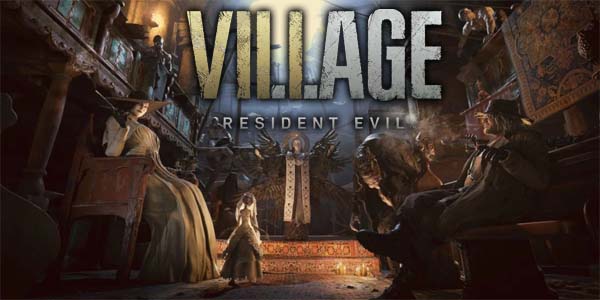
Village seems to be positioning itself as a sort of "greatest hits" of earlier Resident Evil games. I'm not sure it all comes together as well as Capcom must have hoped it would. Resident Evil VII Biohazard did an excellent job of modernizing the design philosophies of the original Resident Evil game. Map design, inventory and resource constraints, and the "fight or flight" nature of enemy encounters all perfectly re-captured the feel of the original PS1 classics, without all of the clunkiness.
Village maintains the exploratory map design of the original Resident Evil and of Resident Evil VII, but it also tries to port concepts and aesthetics from the Resident Evil 2 remake and from Resident Evil 4. The RE2 stuff fits well enough, but the RE4 influences just don't feel compatible with classic design philosophy.
The setting instantly reminded me of Resident Evil 4.
Clash of philosophies
Right off the bat, the general aesthetic screams "Resident Evil 4". The game begins in a small, rustic, eastern European village at the foot of a gothic castle. Just like in RE4, you're quickly ambushed by the monstrous villagers and have to desperately fight your way out. Resident Evil 4 replaced the traditional zombies of the series with semi-aware "ganados"; Village similarly breaks away from the traditional zombies, but this time, the monsters are werewolves.
Not long into the game, you'll start smashing crates to reveal hidden loot, and pixel-hunting along the walls and ceilings for obnoxious sparkling gems to shoot down and collect. Also just like in Resident Evil 4, you'll routinely get rewards of items and money from defeated enemies. That money and loot is used to buy items or upgrade your equipment at a shop, just like in Resident Evil 4. This is where the game started to break down for me.
Loot, ammo, and cash can be recovered from smashed crates or defeated enemies.
Giving the player rewards of in-game cash for defeating foes (and for wasting bullets to shoot glowing gems off of walls) completely changes the motivations of the player in how we deal with enemies. I'm no longer carefully considering whether to try to sneak past an enemy or run away, nor am I ever firing off a single round at an enemy's knee to stun or cripple it so I can get away without consuming more resources, the way I might in REmake2. Since every defeated foe returns some of the resources that I invest into killing it, there is no "fight or flight"; only "fight". The enemies stop being threatening or frightening, especially on the standard difficulty setting, in which ammunition is readily available and the monsters patiently await their turns to charge and attack.
Even inventory management is mostly thoughtless. The more linear, more action-oriented, and less puzzle-oriented design of the game means that key items and treasures are not put in your limited inventory, and there isn't even a storage box to keep excess weapons or supplies. Only weapons, ammo, and healing items go into your briefcase. Everything else has unlimited storage. Even crafting components have separate, unlimited storage (the only exception being the animals meats needed for the Duke to cook meals -- more on this later). [More]
b05b0e00-39c0-4ac3-9d47-9089537c0f54|1|5.0
Tags:Resident Evil, Resident Evil VIII Village, Capcom, horror, survival horror, action, shooter, Resident Evil 4, gothic horror, vampire, werewolf, Ethan Winters, Lady Dimitrescu, castle
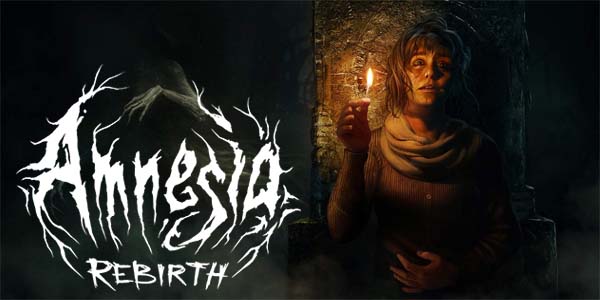
The first few minutes of Amnesia: Rebirth had me expecting much more from the game. The first game, The Dark Descent revolutionized and resurrected the horror genre after major publishers basically gave up on horror altogether, and it provided innovative new ideas that have been iterated upon by almost every horror game since. Dark Descent has the player waking up in a decrepit gothic castle and then descending into dark, atmospheric corridors in which every moving shadow, every creaking floorboard, and every gust of wind ratchets up the tension.
The oppressive light of the sun can be as threatening as the dark.
Rebirth begins with a plane crash that strands the player in the middle of the Sahara desert and prompts the player to find shade from the oppressive heat. The player knows a bit about the protagonist and the situation, it's bright and saturated in color, and is totally the opposite of how Dark Descent begins. It made me think that Rebith might further innovate the horror genre by establishing new tropes, such as using sunlight as a tool for horror instead of cliché darkness. Dark Descent had you cowering in candlelight to restore your sanity after a trek through the darkness. Maybe Rebirth would invert that mechanic and have you seeking the dark, cool corners of the map to escape the parching heat of the sun?
Well, that idea kind of goes out the window when you take shelter in a dark cave about two minutes into the game. After this introductory chapter, it's mostly just back to the same tricks as the first game, except without the expert pacing and subtle atmospheric tension and mystery.
Five minutes after wandering into that cave, I travel through a glowing portal in the walls and step into a hellish Lovecraftian otherworld. There's no build-up to it. No anticipation. Just BAM! portal to alien landscape! Explore for a few minutes, then back to the dark caves. Rebirth kind of blows its load right here at the start by introducing the player to this otherworld right away. I guess you could say that visiting the Lovecraftian otherworld is a natural progression from the first game, which only hinted at such a world's existence, but geez, let us wonder about it for a bit before you show it to us.
Five minutes into the game, and Amnesia: Rebirth blows its load with a Lovecraftian otherworld.
Showing off the goods too much and too soon then becomes a recurring theme throughout the game. My first encounter with the monster had it grab me and hold me up in front of its face for a good 5 or 10 seconds, giving me a good, long look at its well-lit, un-inspired visage. The monster from the original game was usually glimpsed through fog or darkness, and its unnatural proportions and distorted face and jaw made me wonder if I was looking at a person or not. And when I finally did start to get better looks at it much later in the game, it revealed itself to be an instantly-identifiable, iconic monster wholly unique to Amnesia. It wasn't just some generic-looking ghoul, which is sadly the case with Rebirth's monster. [More]
dacd5eb4-a39b-47df-96c5-209cc9ef3cd5|1|5.0
Tags:Amnesia, Amnesia: Rebirth, Amnesia: the Dark Descent, Amnesia: a Machine for Pigs, Frictional Games, horror, survival horror, light, fear, monster, physics, puzzle
|

| 12 | | | | | | | 60 | | 11 | | | | | | | 55 | | 10 | | | | | | | 50 | | 09 | | | | | | | 45 | | 08 | | | | | | | 40 | | 07 | | | | | | | 35 | | 06 | | | | | | | 30 | | 05 | | | | | | | 25 | | 04 | | | | | | | 20 | | 03 | | | | | | | 15 | | 02 | | | | | | | 10 | | 01 | | | | | | | 05 |
|